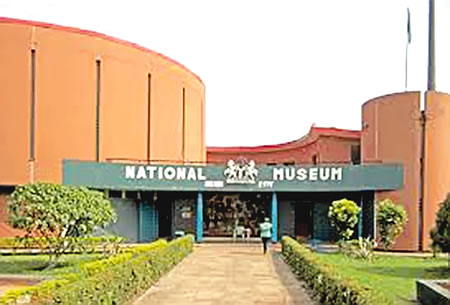The environment is naturally associated with economic activities occurring within it, dependant on it or attracted to it. It is pertinent to give an insight into what a heritage site is. Heritages site is a landmark area which is selected by the United Nations Educational Scientific and Cultural Organization (UNESCO) as having cultural, historical scientific or another form of significance and is legally protected by the international treaties.
The management of these sites in Nigeria falls within the purview of the National Commission for Museums and Monuments as established by the Act of parliaments CAP242 of 2000. The commission is saddled with the responsibility of managing these cultural sites for prosperity, education, and research, protection of our cultural heritage is a veritable source of pride to the nation. There are two world heritage sites in Nigeria—the Osun Osogbo sacred grove in Osun state and the Sukur cultural landscape in Madagali area of Adamawa state.
Management of these sites and the associated economic effects on the populace of the critical economic recession becomes a serious issue of concern which this publication attempts to address. A heritage site is affected significantly during economic downturn due to the drastic fall in people’s disposable income, tourists cut down on their expenditure during this period, this expenditure cost–cutting affects sites patronage which ultimately reduces the revenue being generated.
The economic recession in Nigeria was experienced during the first and second quarter growths in 2016 revealing 0.36% and 1 – 5%. This economic recession has a great effect on the management of our heritage site. A case study of the Osun Osogbo sacred grove revealed. Obviously, whenever economic recession is experienced, there is always a constitutional modification, financial and social restructuring. Such a country witnesses cultural budget decline which in turn slows down or negatively affects the management of the sites of cultural significance.
The Osun Osogbo sacred grove witnessed low patronage by locals and foreign tourists. Sales of cultural items/souvenir, artworks, batik, tie, and dye, etc., declined. The heritage site seemed virtually nonexistent as unnecessary silence enveloped the whole area, save for the presence of staffers, every tourist activity was practically nonfunctional.
Adjustment to management policies and legislation about short-term financial considerations, ideological repositioning regarding roles and responsibilities of heritage and culture. Sponsorship of the regular quarterly and annual programmes experienced withdrawal and there was a need to seek sponsorship elsewhere yielding little or no result with the eventual cancelation of some of the programmes. The usual commercial activities near the heritage site generating income for the host community knew considerable reduction which eventually resulted in the falling standard of living of this community. Another harsh effect inflicted by the economic recession was the inability to carry out the regular repairs, maintenance, and conservation of structures, sculptures, and monuments. Of course, this inability created a gap and sped up deteriorating rare structures.
Proposed restoration work had to be postponed till when the economy recovers. This contravenes the management plan for the site and signal possible listing among endangered heritage sites by UNESCO.
Any real-life situation always brings along with it lessons to learn to avert, forestall, project and plan in order to achieve a future desired result. Arising from this economic recession, the government needs to effect gradual adjustment without making concrete structural changes to cultural policies. While waiting for the economy to recover, it may be the right time to connect the dots and identify the system loopholes.
And where necessary, new structure frameworks have a chance of being introduced and looking inward could help to counter the effects of this economic crisis on the management of our heritage sites.
Most importantly, aggressive marketing and communication strategies were put up to manage the situation in the case of the Osun Osogbo sacred grove. House to House campaign, neighborhood awareness and school visitation were employed and further created the will to visit in the people.
Furthermore, the social media helped in greater measure as various activities in the Osun Osogbo sacred grove/world heritage site were displayed. These also help to generate the desire to visit the grove. And tourists do come to satisfy their curiosity.
Lastly is the adequate training of the heritage personnel in both refresher and capacity building. This is done so that any new policy restructuring and operational framework were efficient, administered to achieve the mission of the cultural heritage Sector – Great Heritage for a greater future.
Ayetigbo is the Education Officer, National Museum, Osogbo, Osun State.






